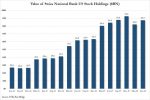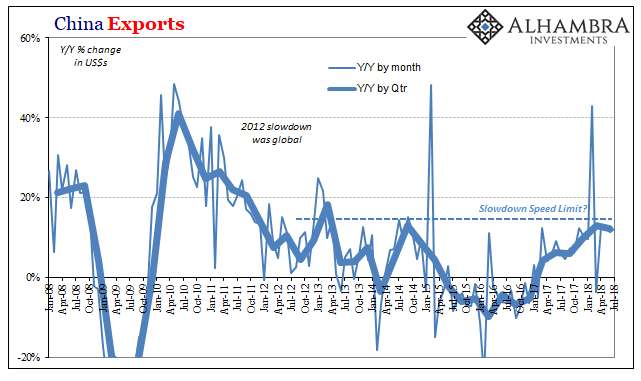Thomas Jordan, Chairman of the Governing Board of the Swiss National Bank
News conference of the Swiss National Bank, Berne, 16.06.2016
Introductory remarks by Thomas Jordan
Ladies and gentlemen
It is a pleasure for me to welcome you to the Swiss National Bank’s news conference. I will begin by explaining our monetary policy decision and our assessment of the economic situation. I will then hand over to Fritz Zurbrügg, who will present this year’s Financial Stability Report. After that, Andréa Maechler will review developments on the financial markets. Finally, we will – as ever – be pleased to take your questions.
Monetary policy decision
Let me begin with our monetary policy decision and the inflation forecast.
We are maintaining our expansionary monetary policy, with the aim of stabilising price developments and supporting economic activity. Interest on sight deposits at the SNB is to remain at –0.75% and the target range for the three-month Libor is unchanged at between –1.25% and –0.25%. We will remain active in the foreign exchange market as necessary, while taking the overall currency situation into consideration. The negative interest rate and our willingness to intervene in the foreign exchange market are intended to make Swiss franc investments less attractive, thereby easing pressure on the currency. The Swiss franc is still significantly overvalued.
The new conditional inflation forecast differs little from that of March. We continue to anticipate an inflation rate of 0.3% for the current year. For 2018, the forecast has fallen slightly to 0.3%, from 0.4% in the previous quarter. For 2019, we now expect inflation of 1.0%, compared to 1.1% last quarter. The conditional inflation forecast is based on the assumption that the three-month Libor remains at –0.75% over the entire forecast horizon.
Global economic outlook
I would now like to turn to economic developments abroad, as these have a considerable bearing on the inflation and economic out look in Switzerland.
In line with our expectations, the global economy has strengthened further in recent months. Global GDP growth in the first quarter was more robust than in previous quarters. This is due in large part to an encouraging upturn in emerging economies. In the euro area, too, economic recovery has gained strength.
Owing to the stronger economic growth, the labour market situation in advanced economies has improved further; with full employment now almost reached in the US, Japan, the UK and Germany. Across the euro area, unemployment has declined again.
Despite these positive developments in the real economy, inflation remains modest in most advanced economies. Against this background, monetary policy in Japan and the euro area in particular is likely to remain very expansionary. In the US, monetary conditions are expected to gradually normalise.
In our new baseline scenario for the global economy, we anticipate that economic developments will remain favourable. For 2017, economic growth looks set to be its strongest in six years. The improved economic conditions are expected to gradually translate into higher inflation only in the course of 2018, especially in the euro area.
The cautiously optimistic baseline scenario continues to be subject to considerable downside risks; this is due to political uncertainty and structural problems in a number of advanced economies.
Swiss economic outlook
I shall now turn to the economic outlook for Switzerland. According to initial quarterly estimates of the national accounts, positive stimuli from abroad were again only partially transmitted to the Swiss economy in the first quarter. Although GDP growth firmed somewhat, it still remained subdued at an annualised 1.1%.
What is our assessment of the current economic situation? Overall, available economic indicators suggest that the Swiss economy is on the road to recovery. Export figures and company surveys alike have pointed to an upturn in manufacturing activity since the beginning of the year. Positive developments are also in evidence in significant areas of the services sector and construction. We are gratified to see that the more favourable economic situation and improved business sentiment are reflected, too, by a greater willingness to invest.
However, certain indicators suggest that the recovery has not yet taken hold in all areas of the economy. Utilisation of production capacity is unsatisfactory in a number of industries, and companies’ profit margins remain tight. These difficulties arise from a combination of economic and structural factors. In addition, the strong Swiss franc continues to weigh on some industries.
Momentum in the labour market reflects this mixed picture. Although the situation continues to improve, the pace is only moderate. Seasonally adjusted unemployment has again receded slightly in the past three months. Companies are nevertheless still cautious about taking on new staff.
For 2017, we continue to expect growth of roughly 1.5%.
Inflation expectations, interest rates and exchange rates
I will now review changes to monetary conditions since the beginning of the year.
The trade-weighted nominal exchange rate for the Swiss franc has remained stable overall in the last six months. In the run-up to the French presidential election, there were episodes of increased upward pressure. After the decision in France, the franc again weakened somewhat against the euro. By contrast, it appreciated slightly against the dollar. In real terms, the franc has virtually remained unchanged on a trade-weighted basis over the last half-year and is still significantly overvalued.
Interest rates in Switzerland have remained virtually unchanged in recent months. The interest rate differential to the euro area has remained stable as well. Short-term rates in the US, on the other hand, have risen slightly, reflecting the tightening of monetary policy there.
Inflation expectations for Switzerland have increased somewhat over the past half-year. Households, companies and financial analysts are now expecting an inflation rate of just above zero, also for the short term. In the longer term, meanwhile, expectations are around 1%. A similar view is substantiated in the company talks conducted by the SNB’s delegates for regional economic relations. Inflation expectations are in the range that is consistent with the SNB’s definition of price stability.
Monetary policy outlook
Ladies and gentlemen, let me summarise my key points. Inflation remains very low and capacity utilisation continues to be unsatisfactory.
The Swiss franc is significantly overvalued. In periods of uncertainty, it is still subject to increased upward pressure. The two elements of our monetary policy ease this pressure. The negative interest rate makes Swiss franc investments less attractive, by at least partially restoring the traditional interest rate differential against other countries. Interventions in the foreign exchange market supply the market with additional Swiss francs when demand for our currency is particularly strong. Our expansionary monetary policy remains necessary in order to ensure price stability, while taking due account of economic developments.
Our National Bank
To conclude, I would like to draw your attention to an additional document in the media pack. It is the preprint of the ‘Business cycle signals’ report.
The SNB’s delegates for regional economic relations regularly conduct talks with managers of companies throughout Switzerland. These talks provide us with a first-hand account of the latest cyclical and structural developments in our economy and are an extremely valuable source of information for the Governing Board in its assessment of the economic situation. A summary of the information gathered from these talks has been published in a quarterly report for some time now.
We have redesigned this report to coincide with today’s monetary policy assessment. The aim of the new design is to allow readers to interpret the results of the talks at a glance. In addition, the text is supplemented by charts to enable comparisons over time. A structured approach, both with regard to conducting the surveys and to selecting the companies, forms the basis for the compilation of such time series. In redesigning the report, we also changed the title from ‘Business cycle trends’ to ‘Business cycle signals’.
I am pleased to be able to present you with the delegates’ new ‘Business cycle signals’ report today. It will continue to be published as part of the SNB’s Quarterly Bulletin.
Ladies and gentlemen, thank you for your attention. It is now my pleasure to give the floor to Fritz Zurbrügg, who will present this year’s Financial Stability Report.
Are you the author? Previous post See more for Next postTags: newslettersent




































